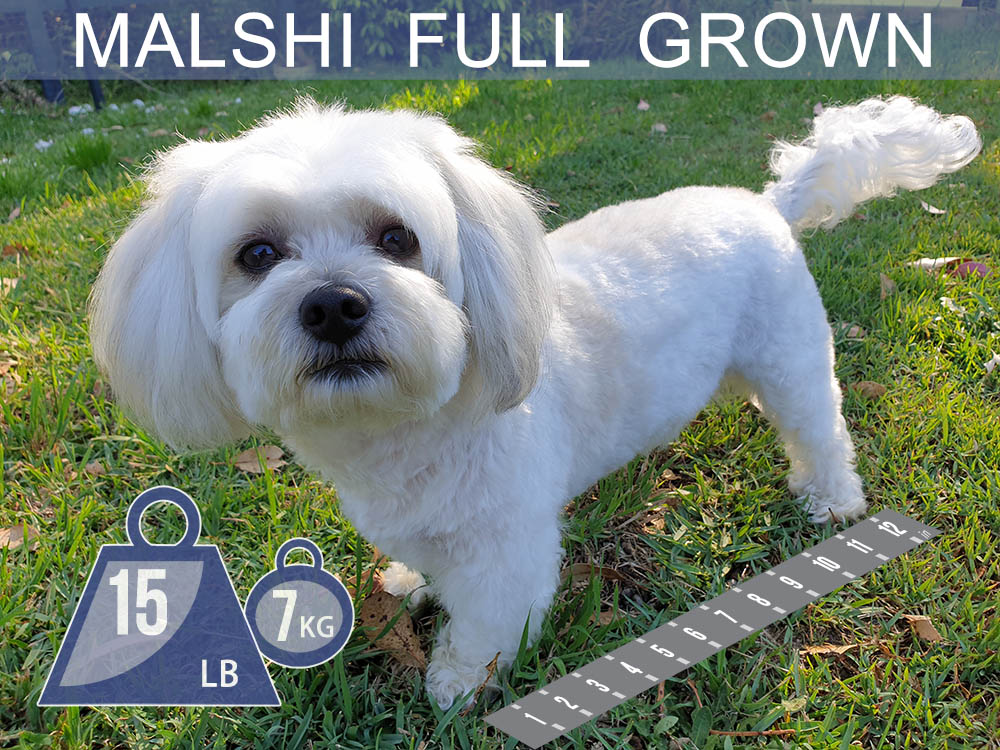Did you know that despite their small size, Maltese dogs can surprise you with their big personalities? But when it comes to their actual size, how big do Maltese get when fully grown? Well, you might be surprised to learn that the average fully grown Maltese dog stands only about 8 to 10 inches tall at the shoulder. That’s right, these little furballs may be small, but they have a lot of love and energy to offer!
When it comes to the size of fully grown Maltese dogs, it is important to consider their breed history. Originating from the Mediterranean island of Malta thousands of years ago, these dogs were bred to be companions, fit for royalty and nobility. Despite their smaller size, Maltese dogs have a sturdy build and a luxurious long white coat. On average, fully grown Maltese dogs weigh between 4 to 7 pounds, making them a perfect lapdog or a charming companion for those who prefer smaller breeds. However, it’s essential to note that individual variations within the breed can result in dogs that are slightly larger or smaller than the average size. So, if you’re looking for a small and cuddly canine companion, a fully grown Maltese may be just what you’re looking for!
-min-180x187-344w.jpg)
How Big Do Maltese Get When Fully Grown?
Maltese dogs are small, adorable, and fluffy companions that have captured the hearts of many pet lovers. If you’re considering getting a Maltese, you might be wondering how big they grow when fully grown. In this article, we will explore the typical size of adult Maltese, factors that can influence their growth, and provide tips on how to ensure your furry friend reaches their full potential.
The Average Size of Adult Maltese
When fully grown, a Maltese dog typically stands between 8 to 10 inches (20 to 25 cm) tall at the shoulder. Their weight usually ranges from 4 to 7 pounds (1.8 to 3.2 kg). However, it’s important to note that there can be slight variations in size depending on several factors such as genetics, nutrition, exercise, and overall health.
Maltese dogs are considered a toy breed, meaning they are one of the smallest dog breeds in the world. Despite their small size, they are known for their lively personalities and fearless nature. Their petite stature makes them suitable for apartment living and easy to handle, making them a popular choice among city dwellers and individuals looking for a pint-sized companion.
Factors That Influence Size
Several factors can influence how big a Maltese dog will grow when fully grown. Genetics play a significant role in determining their size. If the parents of a puppy are small, it’s likely that the puppy will also be small when fully grown. Conversely, if the parents are larger, the puppy has a higher chance of growing to be a bigger adult.
Nutrition is another important factor. Providing a balanced diet that meets their nutritional needs is crucial for their overall growth and development. Maltese dogs require high-quality dog food that is specifically formulated for small breeds. It’s important to consult with a veterinarian to determine the appropriate portion sizes and dietary requirements for your Maltese.
Exercise and physical activity also play a role in a Maltese’s growth. Regular exercise helps to maintain a healthy weight and promotes strong bones and muscles. It’s important to provide opportunities for your Maltese to engage in physical activities such as daily walks or playtime. However, excessive exercise, especially at a young age, can potentially harm their delicate bones and joints, so it’s essential to strike a balance.
Tips for Ensuring Healthy Growth
To ensure that your Maltese reaches their full potential and grows into a healthy adult, there are some tips you can follow:
1. Provide a balanced diet: Feed your Maltese a high-quality dog food that is suitable for small breeds. Ensure they receive all the necessary nutrients for their growth and development.
2. Regular vet check-ups: Schedule regular check-ups with your veterinarian to monitor your Maltese’s growth and overall health. They can provide guidance on nutrition, exercise, and any specific needs your dog may have.
3. Provide appropriate exercise: Engage your Maltese in regular exercise to promote their overall health. However, avoid high-impact activities that may put unnecessary strain on their small bodies.
4. Regular grooming: Keep your Maltese’s coat clean and well-groomed to prevent matting and maintain their overall health and appearance. Regular grooming sessions also provide an opportunity to assess their physical condition.
5. Socialization and mental stimulation: It’s essential to expose your Maltese to different environments, people, and other animals from a young age. This helps them develop good social skills and mental stimulation, which contributes to their overall growth and well-being.
By following these tips and providing a loving and caring environment, your Maltese will have the best chance of reaching their full potential in terms of size and overall health.
Additional Information about Maltese Dogs
Maltese as Indoor Dogs
Maltese dogs are well-suited to indoor living. Their small size means they don’t require a large living space and are comfortable in apartments or houses of various sizes. However, it’s important to remember that even though they are small, they still need regular exercise and mental stimulation. Providing daily walks and interactive toys can keep them physically and mentally engaged.
Potential Health Concerns
While Maltese dogs are generally healthy, they are prone to certain health issues. Some common health concerns in Maltese dogs include dental problems, patellar luxation (knee joint issues), eye problems such as cataracts, and allergies. Regular veterinary check-ups and proper care can help prevent or manage these potential health issues.
Maltese Temperament
Maltese dogs are known for their friendly, affectionate, and gentle nature. They are social animals that enjoy the company of their human family members. Maltese dogs are eager to please, making them relatively easy to train. However, they can be prone to separation anxiety if left alone for long periods, so it’s essential to provide them with companionship and mental stimulation.
In conclusion, Maltese dogs grow to be small, adorable companions when fully grown. The average height of a fully grown Maltese ranges from 8 to 10 inches, and they typically weigh between 4 to 7 pounds. Genetics, nutrition, exercise, and overall health are factors that play a role in their size. By providing a balanced diet, regular exercise, and proper care, you can ensure that your Maltese grows into a healthy and happy adult.
Key Takeaways: How Big Do Maltese Get When Fully Grown?
- Maltese dogs are small in size and typically reach a height of 7-9 inches at the shoulder.
- They usually weigh between 4-7 pounds when fully grown.
- Maltese are known for their long, silky white coat, which requires regular grooming.
- Despite their small size, Maltese dogs have a bold and fearless personality.
- These adorable dogs make great companions for families, singles, and seniors alike.
Frequently Asked Questions
Welcome to our FAQ section where we answer commonly asked questions about the size of fully grown Maltese dogs. If you’re curious about how big these adorable pups get, you’ve come to the right place. Read on to find out more!
1. How large do adult Maltese dogs typically grow?
When fully grown, Maltese dogs usually reach a height of around 8-10 inches (20-25 cm) at the shoulder. In terms of weight, they generally weigh between 4-7 pounds (1.8-3.2 kg). However, it’s important to remember that these are just average measurements and individual dogs may vary.
Keep in mind that the size of a Maltese can also be influenced by factors such as genetics, nutrition, and overall health. It’s always a good idea to consult with a veterinarian to ensure your Maltese is growing and developing appropriately.
2. Do Maltese puppies continue to grow after reaching adulthood?
Maltese puppies usually reach their full height and weight by the time they are 12 months old. However, they may continue to fill out and gain muscle mass until they are around 18-24 months old. It’s important to provide your Maltese puppy with a balanced diet and proper exercise during this growth period to ensure healthy development.
Remember that overfeeding can lead to obesity and potential health issues, so it’s essential to monitor your Maltese’s weight and adjust their diet accordingly. Regular visits to the veterinarian can help you track your dog’s growth and make any necessary adjustments to their care.
3. Are male and female Maltese dogs the same size?
In general, there is no significant difference in size between male and female Maltese dogs. Both genders typically reach the same height and weight when fully grown. However, individual variations may occur, and some male Maltese dogs may be slightly larger than females.
Overall, the size difference between male and female Maltese dogs is usually minimal and not a significant factor to consider when choosing a pet. Focus on finding a Maltese with the right temperament and personality that suits your lifestyle.
4. Can the size of a Maltese be influenced by their parents’ size?
Yes, the size of a Maltese dog can be influenced by the size of their parents. If both parents are small, there’s a higher chance that their offspring will also be smaller in size when fully grown. Similarly, if one or both parents are larger, their puppies may be bigger as well.
However, it’s important to note that genetics can be complex, and there can be variations even within the same litter. It’s crucial to consider other factors such as nutrition, health, and overall care to ensure your Maltese reaches their optimal size potential.
5. Are there any health concerns associated with the size of a fully grown Maltese?
Generally, Maltese dogs are a healthy breed, and their small size doesn’t necessarily lead to specific health problems. However, being a small breed, they are more prone to certain issues such as dental problems, luxating patellas (slipping kneecaps), and tracheal collapse.
Owners of Maltese dogs should pay close attention to their dental hygiene, provide regular exercise to maintain muscle strength, and be cautious when handling or restraining their dog to prevent accidental injuries. Regular veterinary check-ups are essential to monitor their overall health and address any potential concerns.

Summary
So, how big do Maltese dogs get when they are fully grown? Well, on average, Maltese dogs usually reach a height of 8-10 inches and weigh between 4-7 pounds. They are considered small dogs that can easily fit in your lap or small spaces. Despite their small size, they have a big and playful personality that makes them a great companion pet.
It’s important to remember that every Maltese might be slightly different in size, and genetics can also play a role. Some may be a bit smaller or larger than the average range. But overall, if you’re looking for a small and adorable furry friend, a fully grown Maltese might be just the right size for you. Don’t forget to give them plenty of love and care to keep them happy and healthy throughout their lives!
